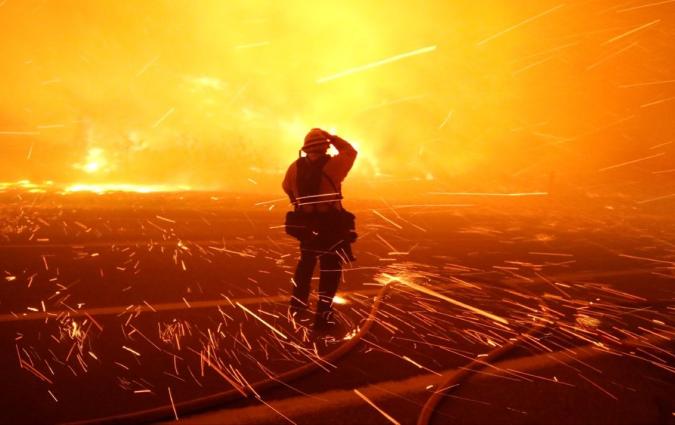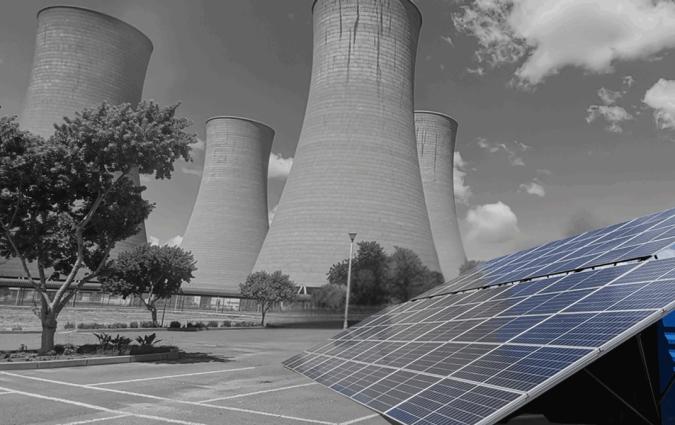In this piece
The non-scientist’s guide to reporting on climate repair

A view of the harbour in St Ives in Cornwall, the site of a poorly reported experiment by Planetary Technologies to make the sea more alkaline. REUTERS/Andrew Winning
In this piece
Rethinking the journalist’s role | From deficit to dialogue | Forearmed for the future | Among the key takeaways: | Why language matters | Avoiding the hype cycle | Towards a Manhattan Project for conversationWhen a Canadian start-up called Planetary Technologies announced plans to pour a chemical derived from mining waste into the bay at St Ives, Cornwall, the locals were incredulous. “Everyone thought it was a joke,” said town councillor Senara Wilson-Hodges. But it wasn’t. The company claimed the chemical, magnesium hydroxide, would make seawater more alkaline so that it could absorb carbon dioxide faster – a process known as ocean alkalinity enhancement.
The project’s goals were noble; the execution was not. Residents only learned that one test had already taken place after the fact. They were left scouring the internet for information about a technology so new that almost nothing appeared on Google. Journalists, meanwhile, struggled to explain what was happening, and in the absence of clear information, rumours bloomed. By the time an independent review deemed the project “very low risk”, opposition was too entrenched. Planetary Technologies cancelled the trial in April 2025.
This kind of breakdown – between scientists, companies, and the public – is becoming increasingly common as climate-repair technologies move from lab to landscape. For journalists, these stories are difficult to report because the science is complex, the stakes are high, and the evidence is often incomplete. Yet good reporting could mean the difference between a public conversation grounded in trust and one fuelled by fear.
Rethinking the journalist’s role
When we think of journalism and science, we often imagine the reporter as truth-seeker: someone whose job is to test claims, check facts, and expose exaggeration. But climate-repair projects pose questions that can’t yet be proved or disproved. Whether a given technology should go ahead isn’t a scientific question – it’s a social one, rooted in how much risk society is willing to tolerate.
As social scientist Sikina Jinnah puts it, “Risk tolerance is not something that’s fundamentally scientific. Risk tolerance is a social choice.”
That’s why journalists have an essential role to play in helping the public understand – not eliminate – uncertainty. We can present risks proportionately, provide scale and context, and avoid portraying technologies as either salvation or catastrophe. The goal is not to simplify the debate but to make it more informed.
From deficit to dialogue
Science communication has long relied on what’s called the deficit model – the idea that if people resist scientific consensus, they simply lack information. “Decades of social science research have basically debunked the deficit model,” writes Holly Jean Buck, who studies climate technologies. People often understand the science perfectly well but make decisions based on their own experiences, values, and fears.
For journalism, that means facts alone aren’t enough. Reporters can act as conduits between communities and experts, finding sources that local audiences trust and encouraging direct conversation rather than echoing competing claims. This approach takes more time, but it also builds understanding – and, crucially, reduces the anxiety that fuels misinformation.
Forearmed for the future
Many climate-repair ventures sit outside the traditional scientific ecosystem. Instead of being peer-reviewed by universities, they are often backed by venture capital, tested through start-ups, and promoted before results are independently verified.
That doesn’t make them illegitimate, but it does mean journalists need to ask tougher questions about transparency and measurement. Who’s collecting the data? Who’s funding the research? How are potential side effects monitored? These questions are simple but powerful, and they form the backbone of a new tear sheet (available for download below) produced for journalists navigating this rapidly evolving field.
The tear sheet offers two complementary tools: a checklist of questions to ask about any climate-repair project, and a set of principles for responsible coverage drawn from researchers William Lamb, Rob Bellamy, and Kaitlin Raimi.
Among the key takeaways:
- Highlight the need to reduce emissions alongside any discussion of carbon removal.
- Avoid confusing carbon removal with carbon capture or offsets – they are different things.
- Report both risks and benefits; don’t unconditionally praise or dismiss a project.
- Explain governance as well as technology: who’s in charge, who profits, who has a voice in decision-making, and who bears the cost?
Why language matters
Social scientists call it framing: the way journalists choose to describe technology shapes how audiences perceive it. For example, stratospheric aerosol injection could be described as “spraying sulphuric acid into the upper atmosphere” or as “mimicking the effects of a volcanic eruption.” Both are accurate, but they evoke very different reactions.
People are predisposed to trust what sounds natural and fear what sounds artificial. “Naturalness itself is a social construct,” says Bellamy. “Everything’s natural. Humans are natural.” Framing technologies as “nature-based solutions” may bias the audience towards approval without encouraging critical thought. Bellamy urges journalists to discuss technologies individually rather than lumping them together under vague terms like geoengineering – a word he avoids because it has become a dog-whistle for conspiracy theories.
Avoiding the hype cycle
Even well-meaning coverage can go wrong. The carbon-removal start-up Running Tide drew glowing headlines for its plans to sink kelp in the Atlantic to sequester carbon. Only later did investigations reveal that its methods were unproven and its claims overstated. By then, millions of dollars had changed hands and the company’s collapse cast doubt on the entire field.
Climate scientist David Ho sees this as a cautionary tale. “Sometimes a company will say, ‘We’ve got this idea,’ and it’s reported as a magical solution,” he said. That leads to funding – and then to disillusionment. The damage, he warns, is reputational as much as scientific.
Towards a Manhattan Project for conversation
Social scientist Sara Nawaz worries that technologies may be cancelled before they’ve even been tested. “We’re at a really vulnerable stage from a public perception standpoint,” she says. The antidote isn’t more data, argues Buck, but more dialogue: what she calls “a Manhattan Project for conversation.”
That’s where journalism comes in. Our task is not to cheerlead or condemn but to help people see the full picture – to understand the science, yes, but also the context in which it sits: how it’s governed, paid for, managed and monitored. If we can do that, perhaps we can help society decide which experiments are worth running, and which risks are worth taking.
For Rebeka's full project, download the PDF below.




